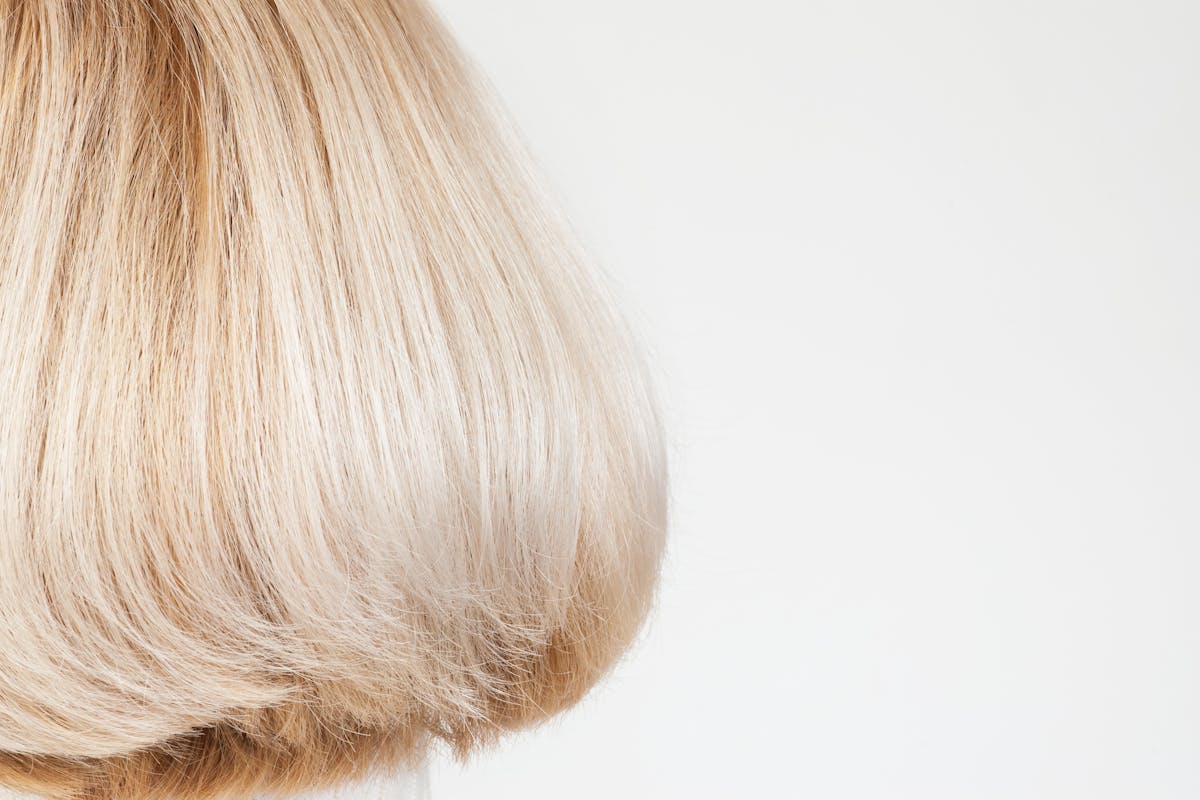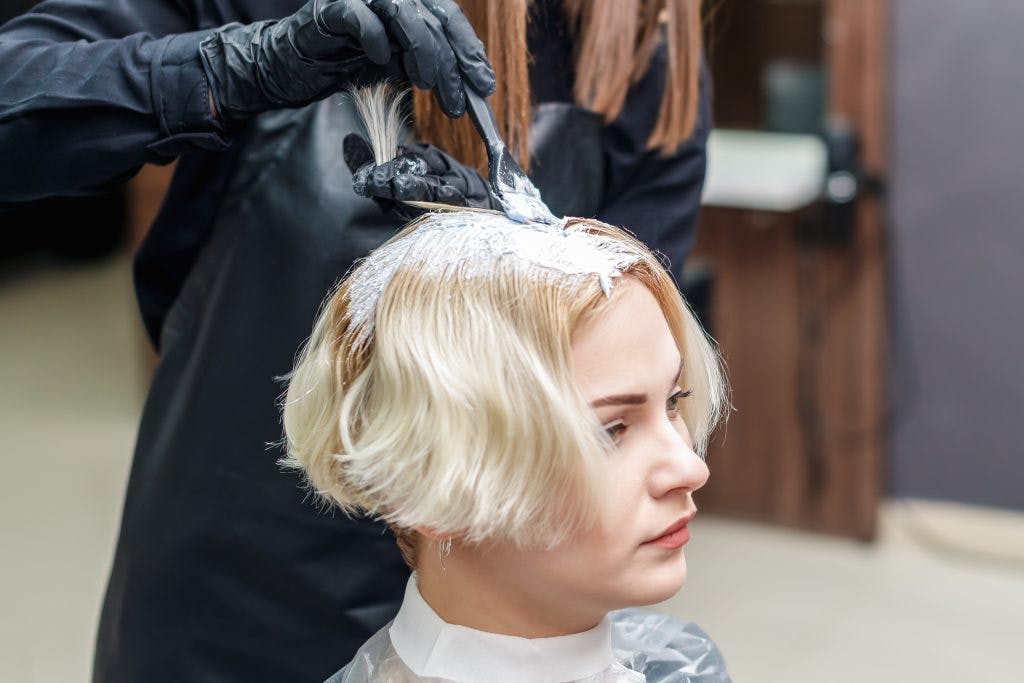Hair bleaching is a chemical dye technique that strips the color from your hair. The process begins with an alkaline agent that opens up the hair cuticle, followed by an oxidative agent that dissolves the hair’s natural melanin. The longer the oxidative agent is left in the hair, the lighter the hair becomes.
5 Things To Know Before Bleaching Your Hair
Lifestyle
10 Min Read

Get hair, health, and science news delivered right to your inbox.

Medically Reviewed by
DR. TESS MARSHALL, N NDMaking a major hair change — like bleaching your hair — requires some thought. But once you’ve made the final decision to bleach your hair, the next few questions you have probably center on how to bleach your hair: What’s the best process for bleaching your hair? What do I need to bleach my hair? How bad is it to bleach hair at home?
If bleaching your hair is something you’d like to do and you want to learn more about how to bleach your hair, keep reading for five important things you should know and consider before brushing on that dye.
1. You’ll need to prepare your hair.
If done incorrectly or carelessly, bleaching can lead to disastrous results. (Think: breakage, burning, and discoloration.) To ensure your hair isn’t damaged by the bleaching process, you’ll need to start preparing your hair months in advance.
Because bleach works best on virgin, or unprocessed, hair, experts recommend not processing your hair for at least three months before bleaching it. Your hair is more susceptible to damage if you dye it and undergo intense hair treatments, like straightening treatments, then immediately bleach it. For most people, the best plan of action is to avoid dyeing the hair for several months beforehand, and then reduce or stop using a curling iron, hot rollers, flat iron, blow dryer, or other heating tools for at least a week before bleaching your hair.
2. Be realistic.
Manage your expectations, and do your research to determine whether your desired shade is even possible. If you have black or brown hair, one round of bleach won’t give you bright blonde hair — and unfortunately, the multiple rounds of bleach it’ll take to achieve that lighter shade could leave your hair extremely damaged. “You must be realistic about what shades can be achieved without compromising the integrity of the hair,” Jackie Vessey, stylist at Fisher Experience Salon and Spa in Braintree, MA, says.
People with dark hair should plan to space out their bleaching sessions over the course of several months — and yes, that means a blonde hair color will not be instantaneous. It could take years to achieve your desired hair color. Additionally, anyone with extremely fragile or damaged hair should proceed with caution. You may have grand visions of yourself with lighter hair, but some hair types simply can’t handle bleach well, and bleaching delicate strands is often not worth the risk.
The same goes for certain skin types. Before bleaching your hair, you should pay a visit to your dermatologist and ask to do a “patch test” to see how your skin reacts to bleach. Reconsider bleaching your hair if you have dermatitis, psoriasis, eczema, a scalp condition, or any type of allergic reaction to the patch test.

3. Think of bleached hair as an investment.
If you’re on the internet searching “how to bleach hair at home” in the hopes of cutting costs, you might want to take a moment to really think about your decision. Because bleach can pose risks to the health of your hair, it’s worth spending a little extra money to make certain the process is done properly.
Consider seeing a professional (or at the very least, consult one before attempting to bleach hair at home), and make sure you’re willing to put in the time and money to buy the necessary products to keep your bleached hair healthy. “A client should know before bleaching their hair that they are making a commitment to take responsibility for caring for their hair,” Jackie notes. “It is both a financial and time commitment.”
4. Be careful!
As you know from reading above, getting your hair ready to be bleached is a process; however, the work doesn’t stop once your hair is lightened. Just as it’s important to get your hair in the right condition for bleach, it’s also important to keep your hair healthy after bleaching. “The condition the hair is left in is the most important factor,” Jackie says.
Be extra-careful with your bleached hair. Experts recommend alternating between moisture and protein shampoos and conditioners, adding a purple shampoo and conditioner into your routine to prevent the blonde from turning into a brassy color, and using a microfiber towel to dry your hair. (Remember to gently dab your hair dry — don’t twist or rub!)
You can also take hair-boosting supplements to help support the health of your strands. Nutrafol Core has ingredients that help support improved strength, shine, and texture of the hair. Each bottle is filled with antioxidants to help protect hair from potential damage caused by bleach.
5. Make sure you follow up with your stylist.
Before leaving the salon, ask for your stylist’s recommendations — and then actually stick to them. “Following recommendations from stylists in regard to products and handling of the hair is key to the long-term success of beautifully lightened hair,” Jackie insists.
You should check in with your stylist three or four weeks after bleaching your hair to make sure your hair is still healthy. See if you need to make any adjustments to your hair care routine, and schedule an appointment for any necessary touch-ups or conditioning treatments. It took a lot of work to prepare your hair for bleach, so do what it takes to maintain the health and look of your new style.